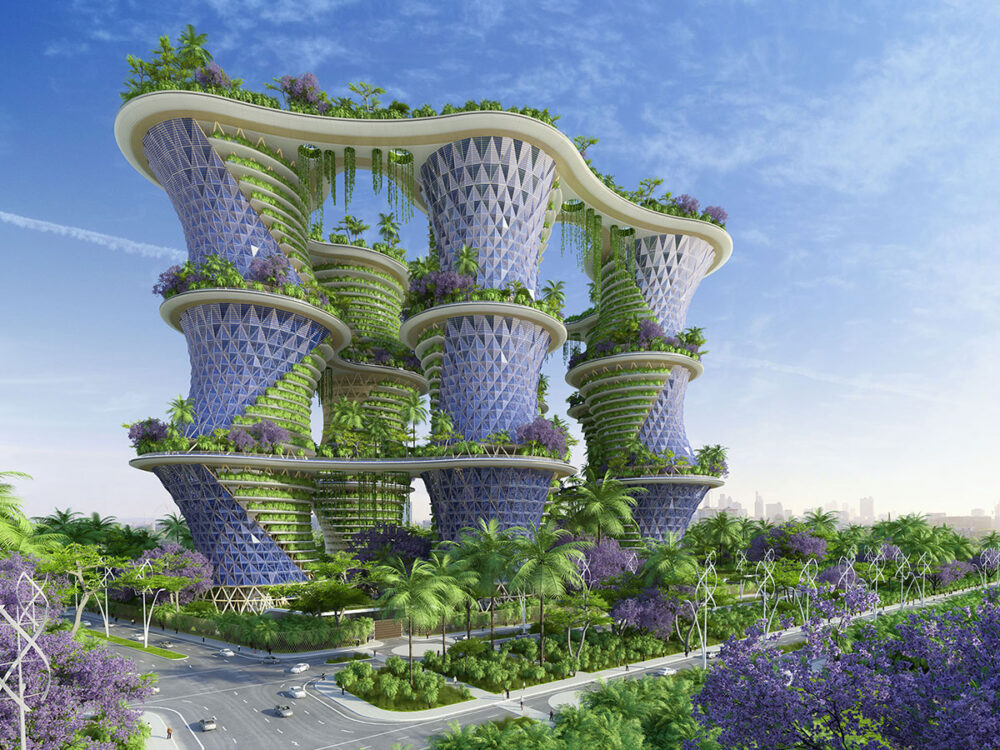On average, 41% of global energy consumption can be attributed to buildings and structures, notes the Energy & Environmental Building Alliance (EEBA). With EEBA also highlighting the fact that buildings produce dangerous emissions that pollute the air and that the construction industry generates more than 170 tons of debris annually, there’s no question that the way that buildings are created needs to change.
By putting the environment first in architectural design, there are a variety of ways that the carbon footprint associated with buildings can be reduced. From the value in popular design trends like biophilia to how architects can work various eco-friendly materials into the job, here’s what you should know.
Exploring climate-friendly architecture options
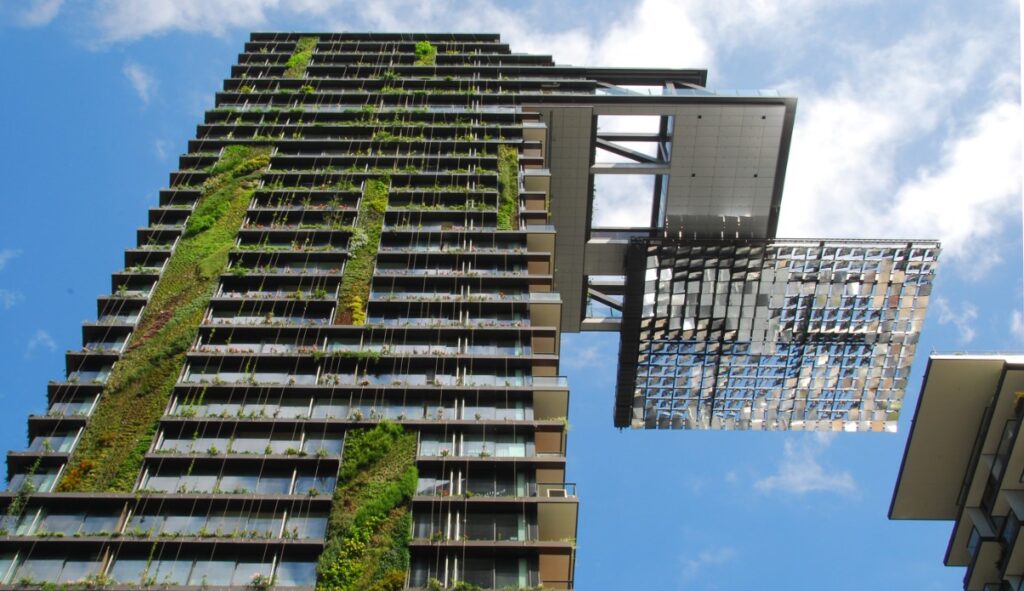
Source: wrmeadows.com
The nation’s buildings are responsible for approximately 40% of all US carbon emissions. Coupled with the effects of climate change, which are reflected in extreme weather, designing buildings that put the environment first is essential. Daniel Jaconetti, senior project architect and the National Sustainable Design Leader for the architecture firm HED tells gb&d Magazine, “Our first responsibility is to educate, and then it’s to design for clients the best possible building or project that meets their needs.” Gb&d notes that according to Jaconetti, the best buildings are ‘designed to be resilient, energy efficient, comfortable, and without toxic chemicals.’ “The energy piece is probably the one that makes the most sense to people — being as efficient as possible. You’re putting out fewer emissions and you’re taxing the system less,” he tells gb&d.
Eco-conscious design can be found in a number of ways — the implementation of solar power is just one common design trend in eco-first buildings, though there are a variety of aspects that can also be taken into account. That said, Biofriendly Planet explains that commercial buildings can be made more eco-friendly in a variety of different ways, including:
- Choosing eco-friendly building materials — this can encompass a wide variety of materials, from bamboo to those that are recycled.
- Renewable energy infrastructure — by prioritizing renewable energy infrastructure like solar power, Biofriendly Planet notes that companies can enjoy a low-risk investment that is practical in the sense that it’s silent and space-saving — not to mention it “demonstrates Corporate Social Responsibility,” which the site points out is vital in attracting new clients.
- Dual plumbing systems — Using low-flow toilets and water that isn’t safe for drinking for aspects like landscaping can allow for water conservation.
Leadership in Energy and Environmental Design (LEED) certification is another way that buildings can be made with the environment at the forefront of the design process. Being the most widely used green building rating system in the world, LEED certification helps greatly in addressing the climate crisis, as buildings that are LEED-certified help lower carbon emissions while creating spaces that are healthier for people. Water conservation, waste reduction, the use of fewer cars, and the use of green materials are just a few ways that LEED certification buildings have already contributed positively to the environment.
The power of nature in architectural design
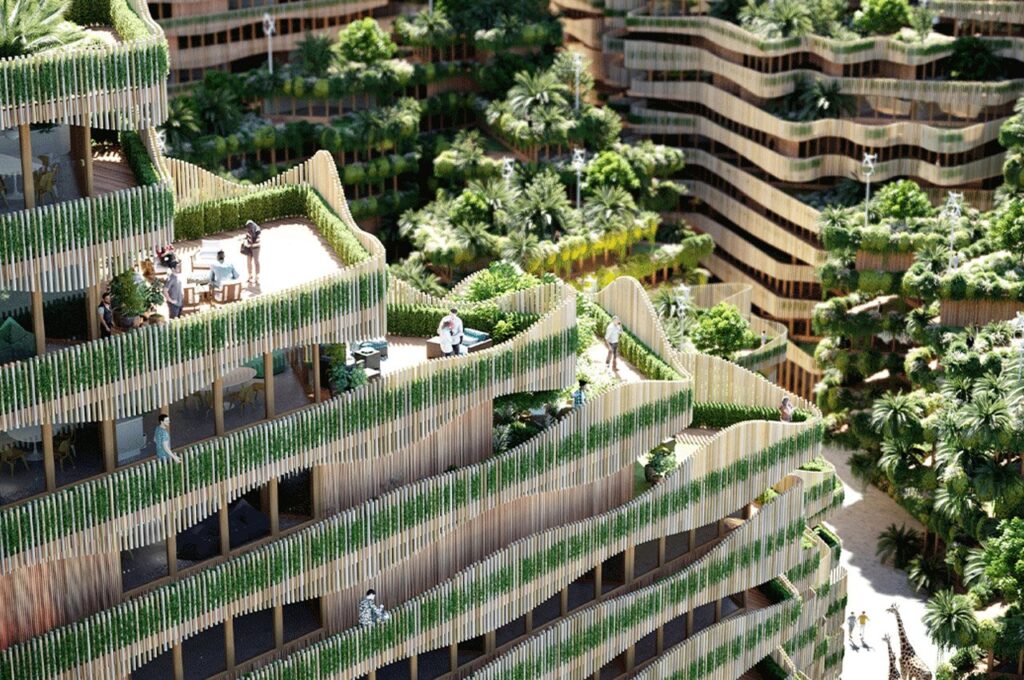
Source: yankodesign.com
When looking for ways to cater to eco-friendly design, biophilia — defined as “a love of life or living things,” has been used in architectural design to incorporate nature into the environment. In regard to the subject, ArchDaily notes “The guiding principle is quite simple: connect people with nature to improve their well-being and quality of life.” With common elements of biophilic design in buildings including indoor trees and plants, skylights, and living walls occupants can enjoy the various benefits associated with the presence of nature indoors. For example, indoor plants may work to lower stress and reduce anxiety, and may even provide a motivational boost. The incorporation of plants can also help absorb sound, provide privacy, and can even serve as a source of food (depending on the plants used, of course).
For already constructed homes, biophilic design elements can help create an environmentally friendly atmosphere. Bringing in plants such as indoor trees is just one major way to make an eco-friendly statement. With that in mind, properly styling the greenery can be the difference between showcasing the tree itself and allowing it to complement the surrounding design. For instance, when looking to blend the tree into the surrounding design, seeking visual harmony in terms of coordinating colors is key in subtle inclusion. On the other hand, taller indoor trees can allow for an eye-catching statement that fills an empty corner floor to ceiling — or can transform a room by being at the center of a space, thus underlining its versatility.
Examples of green design throughout the world
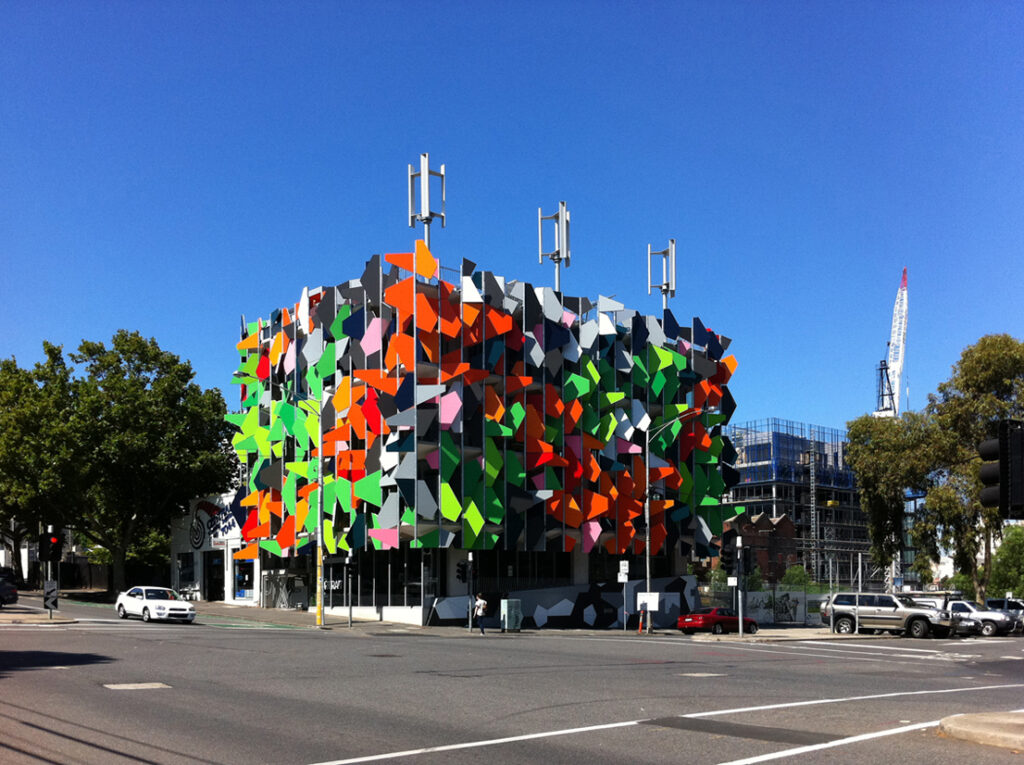
Source: panfilo.co
Climate change is nothing new and has prompted the construction of various innovative eco-friendly buildings throughout the world. From the incorporation of recycled materials to a unique and innovative design that caters to the environment, here are just a few:
- The Pixel Building in Australia — Known as the country’s first carbon-neutral structure, the Pixel Building was designed by the Australian-based firm Studio505. In regard to its innovative features, the building boasts “an intricate assembly of recycled colored panels to provide its occupants with maximized light control,” according to Architectural Digest (AD).
- Apple Park, California, USA — Created by the firm Foster + Partners, the 175-acre campus includes a main, ring-shaped building that runs on fully sustainable energy. AD further goes on to note that between each floor is a canopy that slightly sticks out (which protects employees from the sun), and tucked within each canopy is a ventilation system that funnels air in and out of the building for a truly innovative design.
- The Museum of Tomorrow, Rio de Janeiro, Brazil — Having opened in 2015, the Museum of Tomorrow is a science museum. CNN notes that “Its sustainable design features include adjustable, fin-like solar panels that add to the building’s neo-futurist aesthetic, and a pumping system that takes cold water from the bottom of nearby Guanabara Bay for use in its air conditioning system.”
Effectively incorporating nature into architecture
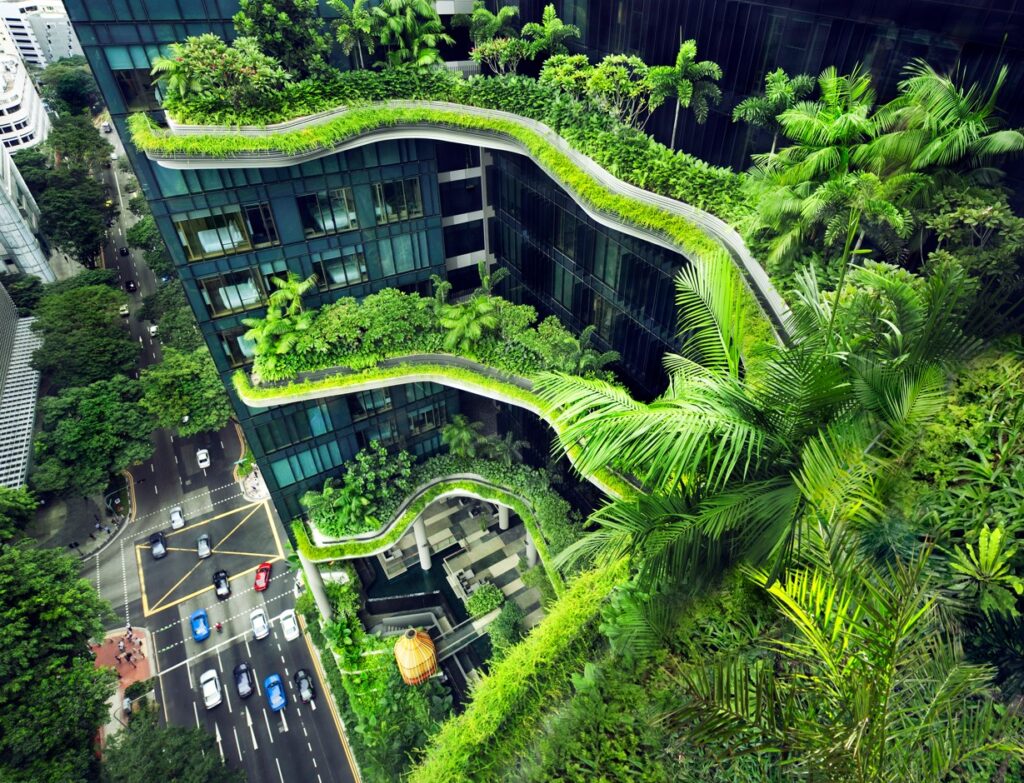
Source: archdaily.com
In addition to green building design, the direct incorporation of nature itself can be found in a variety of buildings. One unique example of this can be found in Milan, Italy, in which a residential development that consists of two towers can be found. While the project was completed back in 2014, a number of firms were involved with its development, according to CNBC. Known as the ‘Bosco Verticale’ (aka Vertical Forest), the towers stand 80 and 112 meters high, and their exteriors are covered in plants and trees. Stefano Boeri, the architect of the design, told CNBC’s “Sustainable Energy” that there are an impressive 21,000 plants or the equivalent of three hectares present. In addition to attracting wildlife, Boeri’s practice, Stefano Boeri Architetti, notes that the “green curtain” works to generate oxygen, absorb carbon dioxide and microparticles, as well as regulate humidity.
To further highlight projects with a goal to include nature within the architectural design, the plans for one structure offer a look into a future of innovative possibilities regarding sustainability. Proposed by Studio Precht, the Toronto Tree Tower is intended to be an 18-story timber tower block that aims to reimagine how the construction of high-rise buildings can be done more sustainably, according to Culture Trip. That said, plans include:
- The prefab modular panels designed by Tmber will be constructed off-site (and then craned in), thus making the construction process less wasteful and disruptive, notes Culture Trip.
- A cross-laminated timber design could help reduce the construction industry’s carbon footprint.
- Renderings of the proposal showcase the incorporation of nature throughout the structure, in which the use of trees and plants is prominently visible from the exterior (on balconies, etc.).
With the effects of climate change becoming more evident, designing buildings in a way that caters to the environment is a great way to reduce the carbon footprint. From the value in using eco-friendly materials to simply incorporating the environment indoors, eco-conscious design can involve a variety of aspects within the building creation process.

